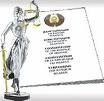Indonesia Constitutional Structure
 To understand modern Indonesia’s legal system, some background must be given regarding the Indonesian constitutional structure. Indonesia is a unitary republic established pursuant to the constitution declared at independence, commonly called the 1945 Constitution (Undang Undang Dasar 1945). During the 32-year period when Soeharto was in power, the 1945 Constitution was never amended.
To understand modern Indonesia’s legal system, some background must be given regarding the Indonesian constitutional structure. Indonesia is a unitary republic established pursuant to the constitution declared at independence, commonly called the 1945 Constitution (Undang Undang Dasar 1945). During the 32-year period when Soeharto was in power, the 1945 Constitution was never amended.
After his resignation in May 1998, the 1945 Constitution was amended four times - in October 1999, August 2000, November 2001 and August 2002. Among other things, these amendments deal with far-reaching issues such as limitations on the powers and term of office of the President; decentralisation of authority from the central government to provincial and regional governments; and the creation of additional constitutional bodies such as the House of Regional Representatives (Dewan Perwakilan Daerah) and the Constitutional Court (Mahkamah Konstitusi). Proposals for future amendments, some of which deal with equally weighty matters, are currently being discussed.
The 1945 Constitution provides for a number of constitutional bodies. Two of the most important are the People’s Consultative Assembly (Majelis Permusyawaratan Rakyat or MPR) and the House of People’s Representatives (Dewan Perwakilan Rakyat or DPR). The DPR is 500-strong and consists of elected and appointed representatives. Its main function is to make legislation and hold the President and his ministers accountable. The DPR meets during sessions scheduled throughout the year.
The MPR currently has almost 700 members comprising all the DPR members, appointed individuals representing the provinces, and other nominees. Constitutionally, the MPR is the supreme state body. Only the MPR has the power to amend the Constitution. It meets more infrequently, typically on an annual basis (constitutionally, it must meet at least once every five years). It issues policy statements in the form of resolutions (ketetapan) as well as the broad outline of state policy (Garis Besar Haluan Negara or GBHN). The country’s overall economic plan is included in the GBHN.
Whereas the MPR previously elected the President and Vice-President, recent constitutional amendments stipulate that the President and Vice-President are to be directly elected by the people. The first direct elections for the presidency and vice-presidency are expected to take place in 2004. Presidential powers have also been circumscribed to some extent by recent constitutional amendments. Also pursuant to these amendments, a person can only be elected as President or Vice-President for a maximum of two consecutive terms of 5 years each. Nevertheless, the Presidency is still a powerful position in that the President is the head of state and head of government as well as the supreme commander of the armed forces.









Post a Comment